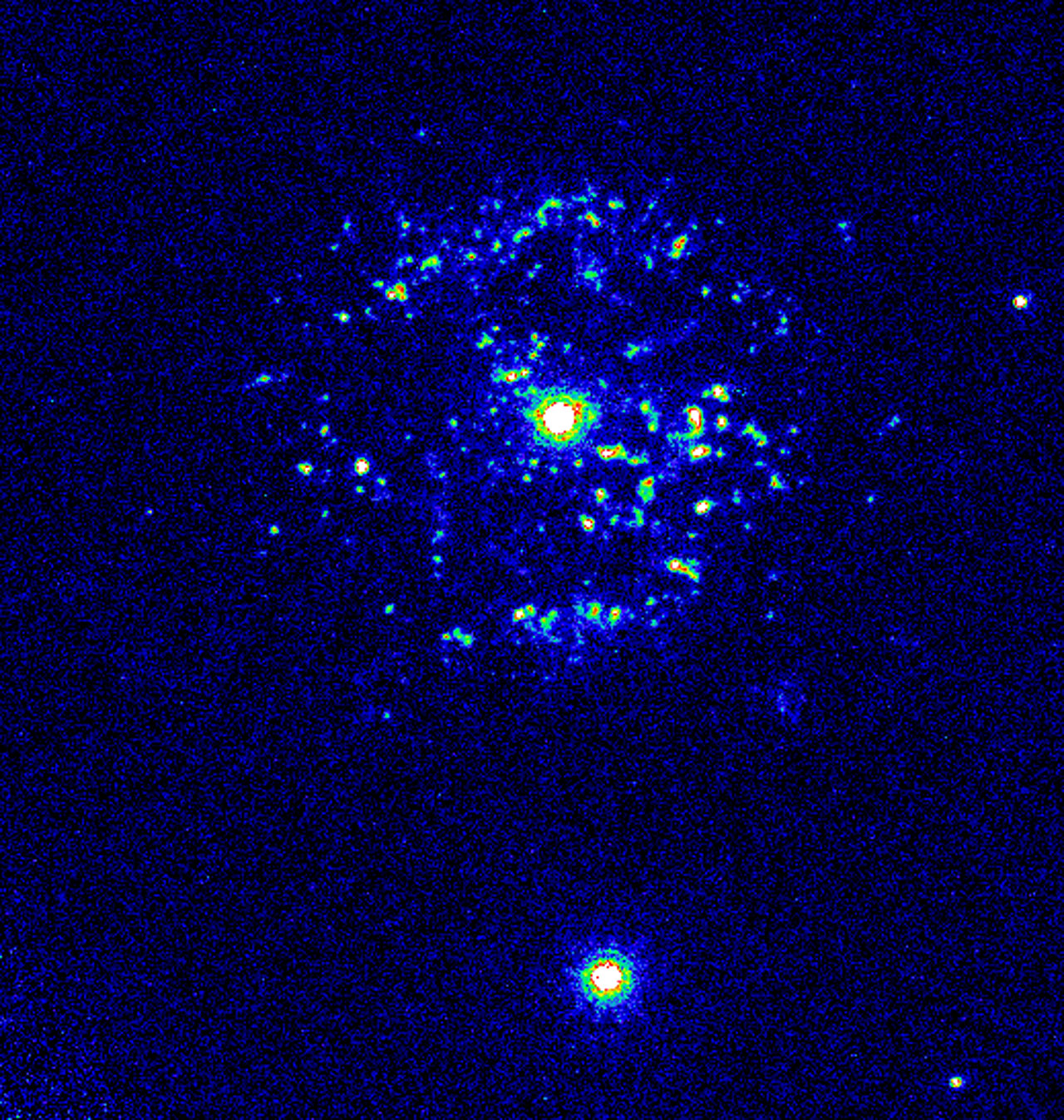The Herschel Space Observatory has revealed how much dark matter it takes to form a new galaxy bursting with stars.
Herschel launched into space in May 2009. The mission’s large, 3.5-meter telescope detects longer-wavelength infrared light from a host of objects, ranging from asteroids and planets in our own solar system to faraway galaxies.
The discovery made thanks to Herschel is a first step to help astrophysicists better understand how dark matter contributed to the birth of massive galaxies in the early universe.
“If you start with too little dark matter, then a developing galaxy would peter out,” said astronomer Asantha Cooray of the University of California, Irvine. “If you have too much, then gas doesn’t cool efficiently to form one large galaxy, and you end up with lots of smaller galaxies. But if you have the just the right amount of dark matter, then a galaxy bursting with stars will pop out.”
Cooray and his team used ESA’s Herschel telescope to measure infrared light from massive, star-forming galaxies located 10 to 11 billion light-years away. The 300-billion-solar-mass amount of dark matter in the area seems to encourage star formation more than any other previously recorded mass; it is less than previously thought.

By mapping he cosmic infrared background (the infrared light from collections of very distant, massive star-forming galaxies), Herschel showed the galaxies are more clustered into groups than previously believed. Because the amount of galaxy clustering depends on the amount of dark matter, the astronomers were able to determine exactly how much dark matter is needed to form a single star-forming galaxy with numerical simulations.
There is still much to be learned, especially on the nature of dark matter, but this measurement is an important key to a better understanding of the galaxy formation process.

